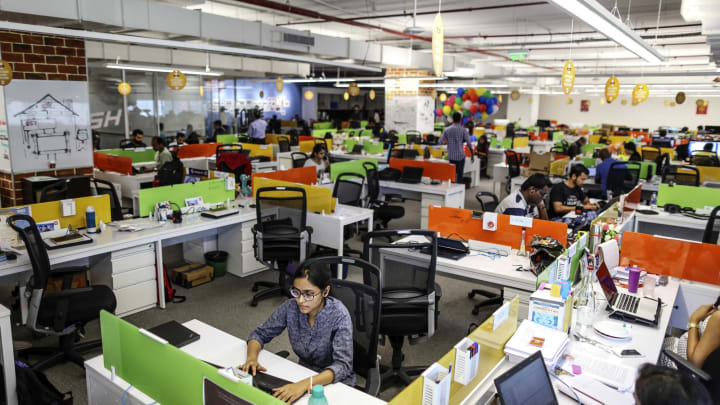Fresh covid-19 restrictions in several states are contributing to joblessness in both formal and informal sector, say experts.
NEW DELHI : Urban joblessness rose in March to reverse three months of decline as the second wave of the covid-19 pandemic slammed the job market once again.
The urban unemployment rate climbed to 7.24% in March, 25 basis points more than the previous month, according to the monthly data of the Centre for Monitoring Indian Economy (CMIE). The already stretched female joblessness rate in urban areas climbed almost two percentage points to 19.07%.
The labour force participation rate (LFPR), adults who are working or actively seeking employment as a proportion of the working age population, in urban India also fell, another pointer to the poor health of the labour market. The labour market shrank by almost 3 million people in March compared to February, CMIE data showed.
The national unemployment rate in March fell to 6.52%, but a closer look at the labour market and its indicators showed that this could be misleading. LFPR declined to 40.17% from 40.5% in February, according to CMIE data. The March LFPR is also the lowest in the past four months. It was 40.6% in January, 40.56% in December, and 40.08% in November. For urban India it fell to 37% from 37.25%
Even the overall labour force size contracted to 425.79 million, which is almost 2.7 million less than in February. A majority of this 2.7 million came from rural India, CMIE data showed.
The contraction in the labour market size in March and the falling LFPR indicates that the economy is not creating enough jobs and that in the absence of decent jobs, people are staying away from the labour market.
Economists and experts argued that an increase in unemployment and fall in LFPR indicate that economic revival is not happening as desired, at least in the short run, and that the surge in infections and restrictions put by states are having an impact on jobs.
Economic activities in several sectors are visible but whether or not they are operating optimally is a question. Besides, sectors such as retail and hospitality have taken a hit again because of the second wave of the pandemic,” said Arup Mitra, a professor of economics at Delhi University.
“The spike in cases and fatalities are keeping people under check and the continued income loss is affecting domestic demand. Look at the core sector data and you will realise that industries are struggling even now. It’s interconnected and contributes to the unemployment scenario,” Mitra explained.
Fresh covid-19 restrictions in several states are contributing to joblessness in both formal and informal sectors, Mitra said. Several cities in Maharashtra such as Mumbai, Pune, Nagpur, and Aurangabad are witnessing restrictions or curfews if not complete lockdowns. In Punjab, educational institutions, except medical and nursing colleges, are shut till 10 April and there are curbs on the number of people allowed in malls.
India had been witnessing a difficult jobs environment even before the coronavirus outbreak but things worsened after March 2020. The situation has improved in recent months, partly because of the resumption of economic activity, but the second wave of the pandemic has hit the job market in some sectors. “Under-employment and disguised unemployment have picked up. That’s why some surveys and reports show that the situation is better in rural India. However, decent jobs and meaningful engagements are still far off,” said Mitra.





































